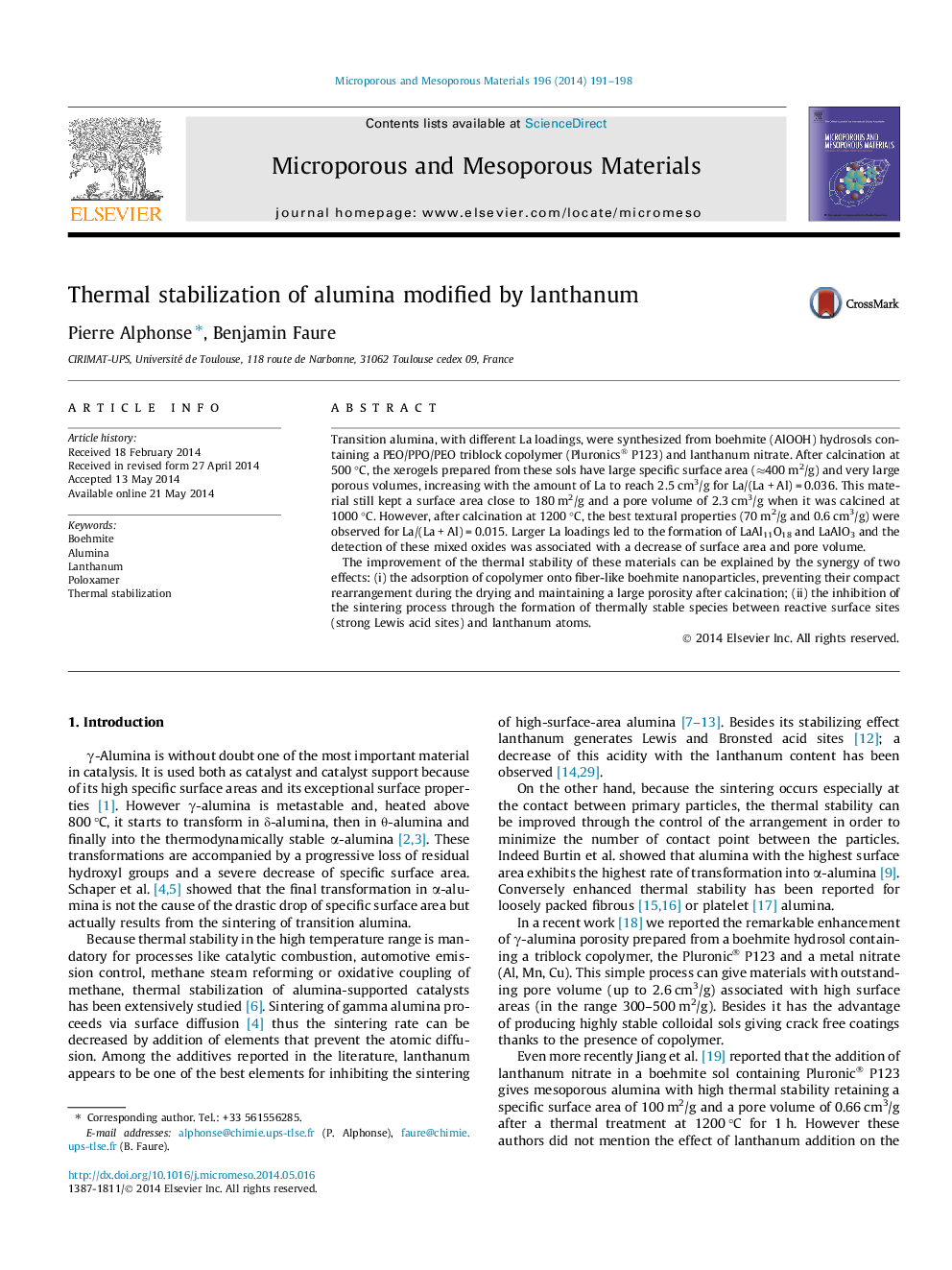| Article ID | Journal | Published Year | Pages | File Type |
|---|---|---|---|---|
| 73004 | Microporous and Mesoporous Materials | 2014 | 8 Pages |
•Easy process giving large SBET (≈400 m2/g) and porosity (Vpore = 2.5 cm3/g).•Stable sols very convenient for making coatings.•Best thermal stabilisation for La loading lower than monolayer (5 La atoms/nm2).•Optimum La loading related to specific surface area.
Transition alumina, with different La loadings, were synthesized from boehmite (AlOOH) hydrosols containing a PEO/PPO/PEO triblock copolymer (Pluronics® P123) and lanthanum nitrate. After calcination at 500 °C, the xerogels prepared from these sols have large specific surface area (≈400 m2/g) and very large porous volumes, increasing with the amount of La to reach 2.5 cm3/g for La/(La + Al) = 0.036. This material still kept a surface area close to 180 m2/g and a pore volume of 2.3 cm3/g when it was calcined at 1000 °C. However, after calcination at 1200 °C, the best textural properties (70 m2/g and 0.6 cm3/g) were observed for La/(La + Al) = 0.015. Larger La loadings led to the formation of LaAl11O18 and LaAlO3 and the detection of these mixed oxides was associated with a decrease of surface area and pore volume.The improvement of the thermal stability of these materials can be explained by the synergy of two effects: (i) the adsorption of copolymer onto fiber-like boehmite nanoparticles, preventing their compact rearrangement during the drying and maintaining a large porosity after calcination; (ii) the inhibition of the sintering process through the formation of thermally stable species between reactive surface sites (strong Lewis acid sites) and lanthanum atoms.
Graphical abstractFigure optionsDownload full-size imageDownload as PowerPoint slide
